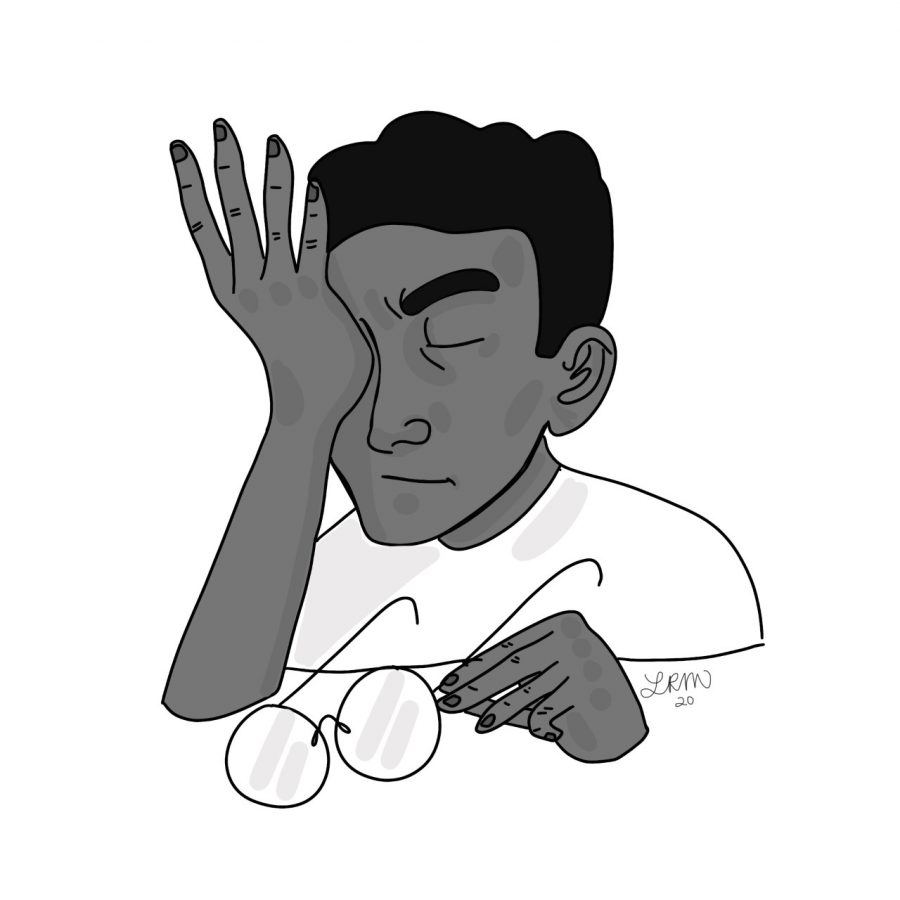Eye Stressed
On a typical school day, we spend about five hours on our computers. While our teachers are considerate enough to give us breaks during long block periods, we still have homework, essays, and projects – not to mention texting, social media, and Among Us to play. Our average daily screen time far exceeds five hours. The result? Our eyes are stressed.
Normally, we blink about 15 to 20 times a minute. However, per the American Academy of Ophthalmology, this blink rate reduces by a half when we look at digital devices.
When looking at a screen for too long, tiny muscles moving our eyeballs are forced through strenuous workouts. According to the American Optometric Association, staring at a screen for two hours is enough to give us eye strain and dryness, leading to headaches, insomnia, and lack of focus.
How can we combat eye fatigue? As aesthetically pleasing as it looks, turning on dark mode is far from a cure-all. While eye drops are comforting, they only feel effective for a few minutes.
There is also the hackneyed 20/20/20 rule touted by every ophthalmologist: Every 20 minutes, look at something 20 feet away for 20 seconds. It takes about 20 seconds for your eyes to completely relax when looking into the distance. This sounds easy, but it is nearly impossible to implement in practice; twenty minutes is too frequent a hassle, and it’s hard to not check TikTok every 20 seconds.
If you’re one of us who have difficulties following through with the 20/20/20 rule, there are a few applications you can download to strongarm yourself into doing it. For instance, Workrave is a free, open-source app that has that functionality. It provides a variety of different timer settings rigged such that, at regular intervals, users are prompted to take a break. The app can even lock your screen and lead you through basic stretching exercises.
Another app is Eyes Relax, which has similar functions as Workrave. It also conveniently allows for multiple profiles to be made for different users – or one user’s different working modes. There are two simultaneously running timers in this app: one of them prompts users to look around briefly; the other reminds users to stand up, stretch, and move away from their screens.
Besides downloading extra apps, another potential solution is to change how we interact with our devices: Keep phones and laptops at least a foot away. Moving screens below your line of sight can also be less stressful on your eyes.
Of course, you can always modify your computer settings. Doubling text size sacrifices a modicum of Wikipedia skimming speed for the health of your eyes. Adjusting screen contrast and brightness depending on light levels is also wise. And remember that dark mode is optimal only when reading in dark rooms for short periods of time.
Ultimately, the most effective method is to stay away from screens whenever possible: take a walk and enjoy the beautiful fall weather, or simply lie on your couch and listen to music with your eyes closed.

